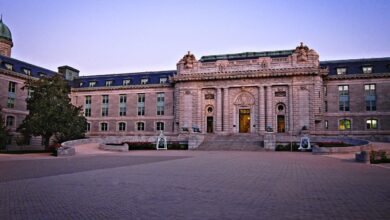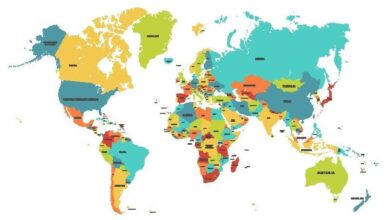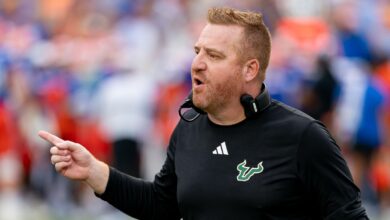Sustainably Sourcing Sockeye Salmon Is Part Of The Alaskan DNA

📝 usncan Note: Sustainably Sourcing Sockeye Salmon Is Part Of The Alaskan DNA
Disclaimer: This content has been prepared based on currently trending topics to increase your awareness.
‘Insanity’ Captain Erick Sabo and his deckhands Savannah and Caleb on Alaska’s Bristol Bay
photo by author
Alaskan fishers are grizzly bears–hibernating throughout the winter, only to arrive on Alaska’s Bristol Bay watershed during the short summer sockeye season, relying on those salmon to build resilience for survival through the successive hibernation.
After operating 24/7 throughout the summer, Bristol Bay’s salmon processing plants are now turning the power off until the cycle begins again next June. Its seasonal workers finish packing the last of their bags, heading back to the lower 48. The sockeye industry is in good spirits following a fruitful 2025 season.
Preliminary reports from Alaska’s Department of Fish and Game reveal more than 40 million sockeye salmon harvested in Alaska this season, 17% higher than the pre-season forecast. It also reports that more than 16 million additional sockeye salmon this season escaped upriver to spawn and continue the cycle of sustainably rejuvenating the population.
The short season, when thousands of fishers and crew live on Bristol Bay, home of the world’s largest sockeye population, for about six short weeks, others processing on land, provides the global supply of sockeye salmon for the entire year to come. It’s also when they earn their yearly income, placing consequential trust in every member, including grocers like Whole Foods Market, who contributes to the elaborate, yet curiously simple supply chain.
The incentivized care brands every single sockeye salmon sustainably sourced, as required by the Alaskan Constitution.
Sockeye salmon escaping upriver at Brooks Falls on Alaska’s Bristol Bay watershed
photo by author
The Meaning Of Alaskan
Purchasing Alaskan salmon at the grocery store means purchasing fish that has been caught and processed to the highest standards. No need to ask the seafood counter if it’s ‘wild-caught’ or ‘sustainably harvested.’ By definition, that’s implied.
‘Alaskan’ means sustainable. Sustainable fishing is Alaskan law, enshrined in its Constitution. Fish farms are illegal in the state.
But ‘sustainable’ is a buzzword often used as a marketing tool without the practice to back it up. So what does ‘sustainable mean’ in terms of Alaskan seafood?
Regulations.
From commercial fishing to sport and subsistence, fishing in Alaska is highly regulated. Regulations come in many different forms.
Helicopters are a common sight above Bristol Bay and each of its five river systems. Alaskan authorities are assuring regulations are followed. All fishing must occur within the defined districts and strict times. Ships cannot be anchored or fixed. Fines are issued for any regulations that are broken. Regular fines will result in confiscated gear.
Other regulations to ensure maximum quality are implemented through incentives, which on the waters of Bristol Bay primarily lie in price increases for certain practices. Those include not harvesting the fish from the net by its tail, setting down a cushioned mat below the net while harvesting to avoid bruising the fish, bleeding the fish yourself and collecting harvested fish in containers of refrigerated sea water.
Each of these incentives, which can add up to 20 cents per pound to the fisher’s final income, adds to the increased quality of the salmon. That’s also why ‘Alaskan’ means quality.
Jason Hedlund of Whole Foods Market
photo by author
Managing Sustainable Escapement
How do you deplete resources from the earth while simultaneously creating more opportunity for the future?
The State of Alaska has solved this problem primarily through rigorous escapement management. The Bristol Bay watershed is a migration zone and the heartbeat of escapement, the instinctual cycle of salmon creating a sustainable migration pattern. Its shallow waters make it desirable for salmon, and undesirable for other species, making bycatch a rarity. The Bay hosts only adult salmon, a few years old, meaty and nutritious. The millions which do not get caught (more than 16 million in 2025), swim up one of five rivers, where they will spawn, making way for new salmon.
Travis Elison of Alaska’s Department of Fish & Game
photo by author
The young sockeye grow for two or three years in the Bering Sea, eating zooplankton and krill, earning their deep red flesh. “This is where they’re harnessing the protein, then bringing it back to Bristol Bay watershed,” says Whole Foods Market’s Jason Hedlund, who works closely with Alaskan fishers to procure salmon to merchandise. “We need enough fish to catch, and enough to go upriver,” Hedlund tells me. “Escapement drives the whole wheel.”
Escapement is measured by one of eight fish counters, including the Naknek River system counter, which Travis Elison of Alaska’s Department of Fish & Game, manages. These humble decks created by some scaffolding, wooden planks and cinder blocks are a lifeline for Alaska’s economy. “Each hour, someone climbs up, counts for ten minutes, multiply by six, That’s our hourly passage. It’s that simple,” Elison tells me. “The most we’ve seen is four million passages an hour.”
That yearly escapement goal, or the ‘sweet spot,’ as Elison puts it, is between 800 thousand and two million fish. Escapement goals have been met for the 2025 season.
Naknek River counting tower
photo by author
The watershed is nourished by the salmon run. “The salmon harness the untapped nutrients,” Hedlund says. “[Adult salmon] are basically setting the stage for the next generation. As they die, they’re feeding that entire ecosystem…bears, everything’s eating them.” It’s why the region is an ideal habitat for grizzly bears, making Katmai National Park and its Brooks Falls a natural treasured spectacle.
Alaska’s sustainable regulations make it so that even if there is a poor year, the system will still thrive. “We’re not concerned about sockeye becoming endangered,” Elison says. “It will always fix itself because of tight regulations.”
Managing escapement throughout the season for future fruitful harvests is sustainability. In a sense, this is regenerative aquaculture.
Cranking out the gill net
photo by author
Summer On A Drift Boat
There are no roads or railways leading to the Bristol Bay watershed.
The only means of arriving in the bare region is by water or air.
But once you arrive during peak season, the energy of the sockeye begins to permeate.
Each fisher who descends on Bristol Bay for the season can’t afford to take their eye off of the prize. Every moment holds value. They say farewell to their friends and family to set out on a mission for the summer.
‘Insanity’ Captain Erick Sabo
photo by author
Each ship is an individual business. Fisher Erick Sabo lives on Bristol Bay every summer as the Captain of ‘Insanity.’ He and his crew, two aspiring Captains themselves, live in close quarters in bunks on the bottom of the boat, stocking up on canned and frozen foods, some meat sticks even. Sometimes they’ll cook salmon for dinner.
“On a good day we would catch 20,000 pounds [of sockeye],” Sabo tells me on the drift boat as he prepares to make his presence known on a July morning on the Bay. “The most I’ve ever had on this boat was about 28,000 pounds, and that was in about six hours,” says Sabo, who also has a degree in Environmental Law and sits on the board of the Bristol Bay Regional Seafood Development Association. This season, Sabo says, catching about four to six thousand pounds a day were typical, with a couple of 10,000 pound days thrown in there.
Intense but friendly competition among each commercial ship in the moments leading up to the release time, which changes every day depending on the tides and the number of boats. One day it may be from 11am to 11pm, the next it could be from Noon to 8pm. These are the only hours fishing is permitted. Sabo listens attentively to radio scanners to help determine his positioning. ‘He also has an eye out for jumpers.’ “The fish are like popcorn,” Sabo says.
Sockeye salmon about to be harvested
photo by author
“You give people space, but you gotta do what you gotta do,” he says.
Hedlund adds, “there’s a gentleman’s agreement on how close and far apart you should be. The north line of [the village] Egegik is a battleground. Boats will throttle and push others out of the way.” Healthy competition is sustainability.
The split second the clock turns to the opening hour, buoys from every ship are tossed in the water and the 250-fathom deep gill net is cranked out by the deckhands.
Every decision during open hours is an important one that only experience, intuition and relationships–and a little bit of good fortune–can dictate. He details getting stuck in a tide in a previous year. “I probably lost 6 to 7,000 pounds,” he says. “If that translates, I lost ten grand.“ That’s not ten grand he can make up. That’s ten grand less that he has in his pocket as profit for the year or to pay his overhead because of that one oversight–there is little margin for error.
“If I move up there I lose an hour of fishing,” he says as he points into the distance, thinking in the middle of a busy day. But it may be a valuable opportunity for him compared to his current position where there’s a lower concentration of fish. It’s a gamble.
Tote of refrigerated sea water
photo by author
The lifestyle as a whole is a gamble too. Sabo begins the season not knowing how much money he’s going to make, not knowing how much money he’s going to have for the entire year to come. Fishers are still working to recuperate from a lousy 2022 season. “Last year [we earned] 90-95 cents per pound.” he says. “The year before was a base price of 50 cents.” They won’t know until later in the fall what their total income for the 2025 season amounts to, with final adjustments sometimes not taking effect until the following March.
Sabo and crew harvesting sockeye salmon
photo by author
The net begins to fill up with sockeye salmon as it sits in the water and the ship slowly drifts. Deckhands crank in the net and rip each individual fish out of the net they’re tangled up in. Some are stuck good. It’s a laborious process where every second counts. The longer it takes to harvest each fish, the less time there is to catch more.
Each salmon must be untangled from the net one by one. That means that every single one of the 40 million Alaskan sockeye that will be eaten around the world over the next year has been individually handled. Some are more tangled than others, but being as gentle as possible is key in order to maintain quality. It’s a balance of efficiency.
Once the fish are untangled, they are tossed into totes in compartments beneath the ship filled with refrigerated sea water between 55 and 60 degrees Fahrenheit. This cool temperature is an incentive that keeps the fish fresher before heading to the processing plant where they are sorted.
Processing sockeye salmon at Trident Seafoods
photo by author
From Ship To Tender To Plant
Every 12 hours, in between tides, those totes are carried onto tenders which act as the middleman between ship and plant. Incentives are measured and each individual fish is inspected. Lower quality fish gets sorted for future items like canned salmon, while higher quality fish gets sorted for restaurants and high-end merchandising.
Trident Seafoods
photo by author
On the tender, workers are grading quality, which includes factors like minimal scale loss, minimal net marks, bite marks from other animals, good color and a plump size.
Trident Seafoods, one of Bristol Bay’s primary processing plants and distributors, runs nonstop for the season and can process up to 1.3 million pounds of salmon every day. There is no power grid at Trident. The plant creates its own electricity with diesel and supplies water through a well. All workers live in a residence nearby for the season. About 200 ships contract with Trident before the season begins.
Newly-flash frozen sockeye salmon
photo by author
Fish are first headed and gutted in the busy plant. Fish that will be made into a filet are split, with the meat heading in one direction, and the guts and roe down another conveyer belt. Fins are also cut off and bones are removed. One aspect of Alaska’s sustainability is that every part of the fish must be utilized. Guts may be used for products like pet food.
Some fish are kept fresh and are shipped on ice as quickly as possible to retailers to merchandise. Others are frozen and vacuum sealed as quickly as possible. Time is the enemy.
Glistening Sockeye
The meaning of ‘Alaskan’ can only imply high-quality so long as each step of the supply chain maintains the quality in which the sockeye were caught and processed.
It’s rare to find fresh sockeye to purchase unless it’s peak season, which is why freezing and vacuum sealing technologies have become so crucial and advanced. In terms of sockeye salmon, the term ‘fresh, never frozen’ is not what consumers should be looking for given that there’s only about a six week window where it’s considered ‘fresh.’ There is no such thing as fresh Alaskan sockeye in December.
Wesley Rose, Whole Foods Market SVP of Perishable Merchandising
Whole Foods Market
Properly thawing sockeye from frozen throughout the year is precisely how it should be consumed.
“There is this inherent bias towards ‘fresh,’” says Wesley Rose, Whole Foods Market’s Senior Vice President of Perishables, which includes seafood, butcher, produce and bakery. “We’ve seen the evolution of that quality in the past 25 years that now you can consistently have this available year round.”
The current strong demand for sockeye is in part due to the high standards for merchandising at markets like Whole Foods. “Merchandising is intense,” says Rose, who began his career at a Massachusetts Whole Foods Market behind the seafood counter when he was a teenager. “It starts on the boat, on the beach, on the plane, making sure we got the handling and the quality right, and then who’s going to filet it and deliver it to our stores.”
Rose encourages Whole Foods shoppers to approach seafood differently than what he typically witnesses. “There are fundamental questions that customers get wrong…’did it come in today? Is it fresh?’” Rose expresses. “Everything in that case is a quality that we are comfortable selling…the right question is, ‘how are you going to prepare it?’”
Whole Foods Market has direct relationships with fisheries, distributors and even buys certain seafood at auction. Hedlund obsessively checks global auction prices throughout the day in order to purchase what he believes will sell best at Whole Foods Market. He also relentlessly reinforces his relationships with Alaskan fishers so they feel confident that the quality of the fish that they have worked hard to obtain will remain through the entire supply chain. “We have consistent access to the best quality fish because of those relationships,” Rose says.
Whole Foods Market frozen sockeye salmon
photo by author
The placement of every single raw product on ice in the seafood department’s open air cases is highly important and intentional. “Sockeye salmon should glisten,” Rose explains. “It should be firm. It should smell good.” If products are merchandised poorly, no one will want to purchase it and money will not circle back to fisheries and the Alaskan economy could suffer. Workers at the seafood counter are trained to merchandise flawlessly, just as Rose learned 30 years ago and has continued to instill.
“[The fisheries] go to great lengths to ensure that that product is there for generations,” Rose says. “We owe it to them to ensure that customers are going to see that top quality and buy it again and again.”
The first of this year’s frozen sockeye is thawing out for the lengthy off-season, the Alaskan fish industry is setting its next season’s forecast. “It’s roughly a third smaller, basically a 27% reduction from what this current year was,” Hedlund says. “It doesn’t sound great, but I think about it in those ten to 20 year norms, and it’s still falling within that range.”
With the sockeye population swimming back to the Sea, chubbed up grizzlies find a cozy spot for hibernating as Arctic temperatures drop. They say thank you to the formidable regulations that Alaskans have fostered over the past hundreds of years, and even more diligently since Statehood, that allow them to continue their most natural cycles of life even in this most modern era as other environmental phenomena change. Us humans, however, get to enjoy the beautiful red sockeye all year long.
Katmai National Park in Alaska’s Bristol Bay watershed
photo by author




